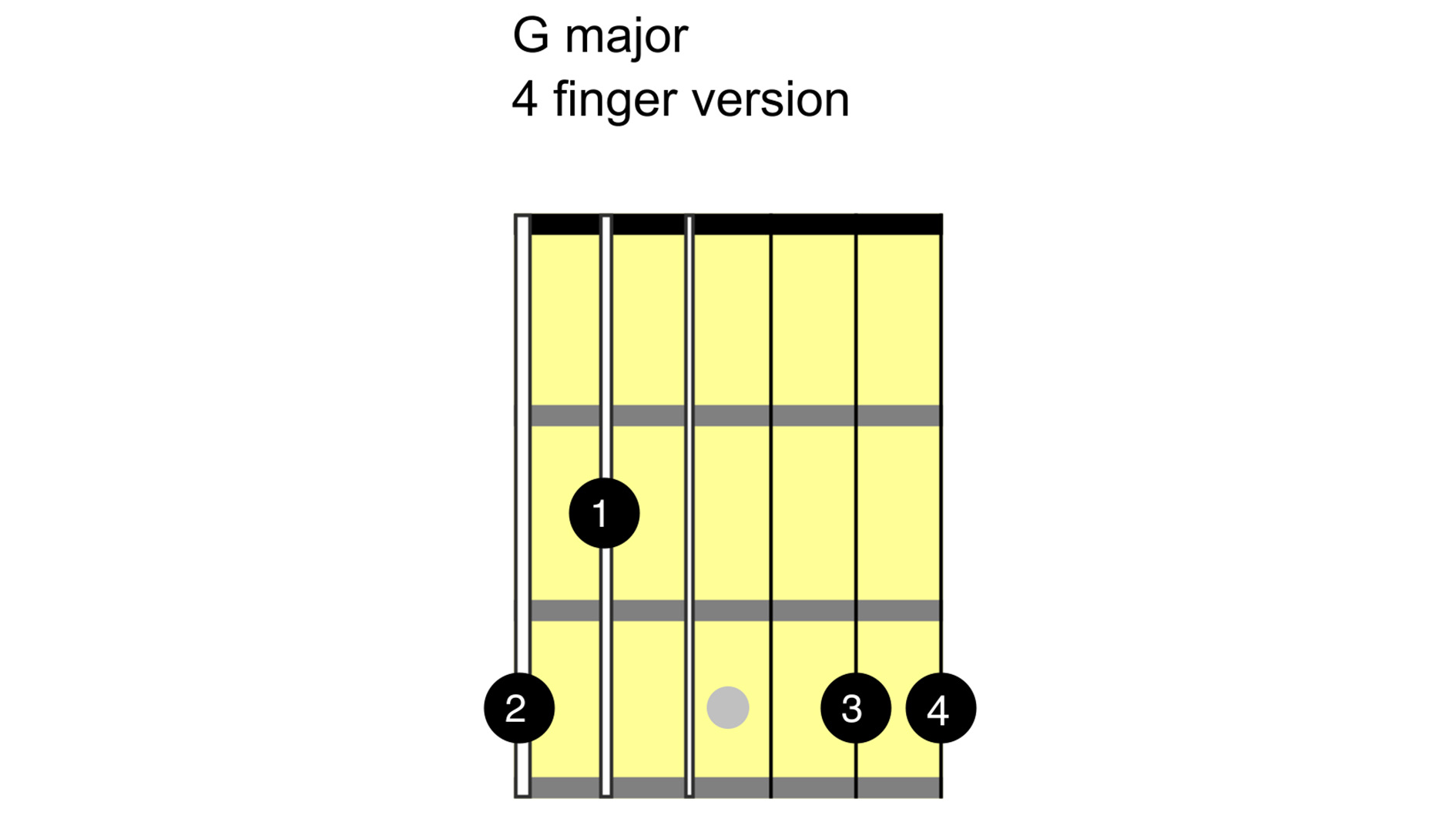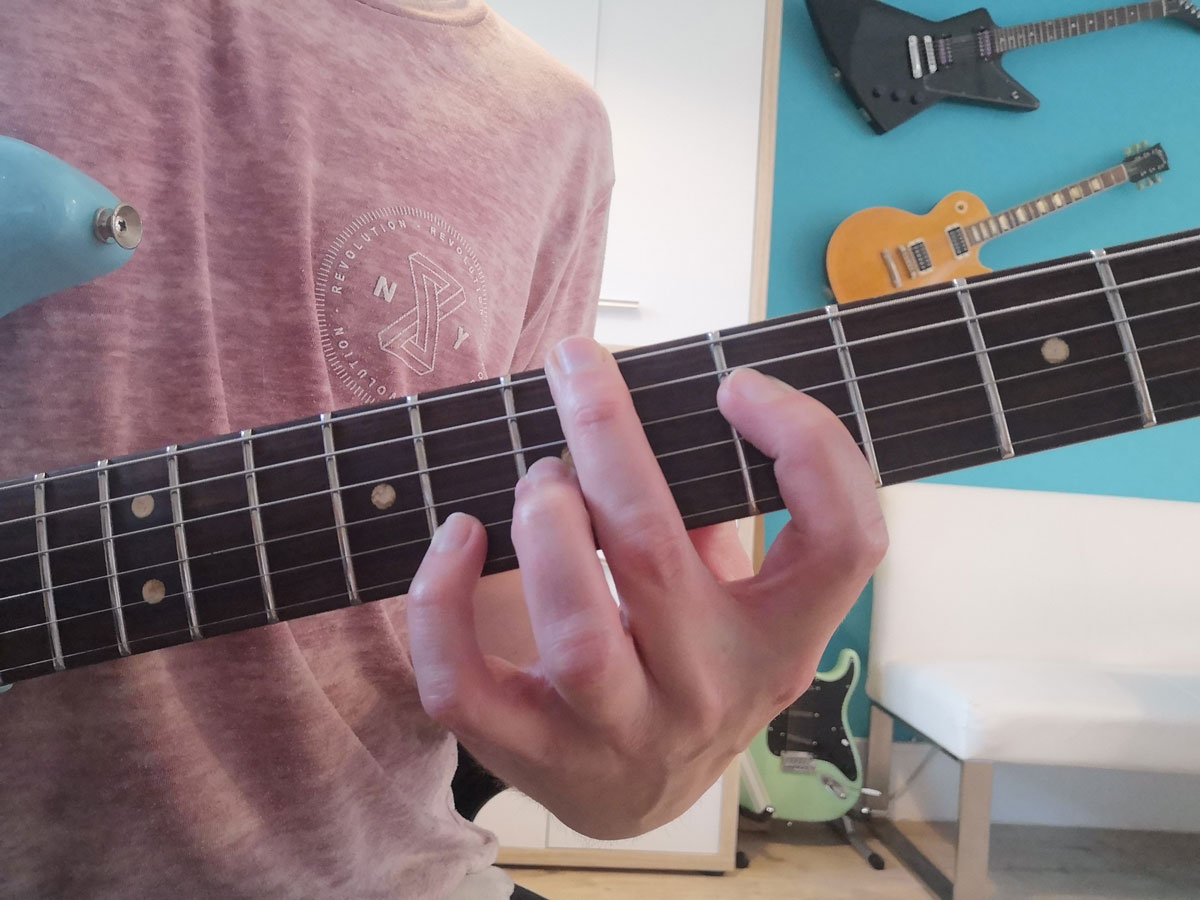How to play the G chord on guitar
Beginner guitar: we introduce you to one of the most commonly found chords in guitar playing, as well as some useful variations

G major is the easiest key to play on guitar. Of the seven chords in the key, five of them (G, Am, C, D, and Em) can be played with straightforward open shapes. That makes G an essential chord to know.
Whether you want to play Ed Sheeran’s Perfect (with capo on fret 1), AC/DC’s You Shook Me All Night Long, or Aretha Franklin’s Respect, you’ll find a shape that works here.
We’ll start our guide to how to play the G chord on guitar by looking at open chord shapes, and then check out some advanced barre chord alternatives. At the end we’ll look at some cool-sounding substitutes for G, including G7, G major 7, and G/B.
How to play the G chord on guitar: open G


Put your third finger on the high E string, fret three. Stretch your second finger onto the low E string, fret three, and add your first finger onto the A string, fret two.
Alternatively, the open G chord can also be played with fingers 2, 3, and 4. Check out our fretboxes and photos and see which works better for you.
Sometimes the other chords in the song will dictate which fingering to use. For example, Guns N’ Roses’ Paradise City requires you to use this alternate fingering because of the C and Fadd9 chords that come immediately afterwards. Most players find using fingers 1, 2 and 3 is easier at first and works for most songs, though.
Stretching between the two E strings can be a challenge at first, especially without accidentally touching any of the strings in between. Be patient with yourself and stop if anything hurts.
All the latest guitar news, interviews, lessons, reviews, deals and more, direct to your inbox!




How to play the G chord on guitar: open G (four-finger version)

There’s also a version of open G played with four fingers. While this might seem trickier, it actually requires your fingers to stretch slightly less, and your 3rd and 4th fingers can support each other because they sit close together. This is the version of G that appears in Wonderwall by Oasis.
Remove your first finger so the A string is silent and it becomes AC/DC’s trademark G5 powerchord. This version is great for moving between G and Cadd9 because they are such similar shapes.


How to play the G chord on guitar: G major barre chords



The E shape G major barre chord is played at the 3rd fret. Barre with your first finger. Finger 2 is on the G string, fret 4; finger 3 on the A string, fret 5; and finger 4 takes fret 5 of the D string.
This is a moveable shape, and you may find it’s easier to play on the higher frets at first. If you move it you won’t be playing a G chord anymore, obviously, but you can use it to master the shape.



The A shape barre chord for G is played on fret 10. Try to avoiding picking the low E string. It can be tough to fret the chord cleanly without choking the high E string. It’s worth mastering that skill to improve your technique, but in practice the chord sounds fine without the high E string anyway.



Alternatively, you can bar from the D to the B string with your third finger. This is trickier at first but faster once you get it down.
How to play the G chord on guitar: G chord variations
G7



As well as the four-finger G we discussed above, G7 can be a flavorsome alternative to regular G. If you’re playing a song in the key of C major, G7 will work reliably. In other contexts, use your ears. This chord is easier if you’ve been playing G major with fingers 2, 3, and 4, because you’ll need your first finger to play fret 1 on the high E string.
G major 7



A more advanced alternative is G major 7. This jazzy chord sounds sophisticated for songs in the key of G, and your Stevie Wonder and Bruno Mars covers will improve from knowing it.
Hardcore jazzers will play this chord by hooking their thumb over the neck to play the bass note, but we’ve chosen a fingering friendlier to small hands.
G/B



Then we have a stretchy monster, G/B, also known as a first inversion. You can play this chord anywhere you’d find a G major.
Because the lowest note is not G it changes the mood in a cool way, but you’ll have to judge whether it’s right for your context. Unlike a lot of major chord shapes, it sounds great on distorted guitar.
If it’s too much of a stretch, leave out the B string, and use your fourth finger on the G string instead.
Gear up with our beginner guitar guides
- Take your first steps with the best acoustic guitars for beginners
- Or plug in with the best beginner electric guitars
- Start them young with the best guitars for kids
- Essential guitar accessories for beginners
- Give you playing a boost with the best online guitar lessons
Jenna writes for Total Guitar and Guitar World, and is the former classic rock columnist for Guitar Techniques. She studied with Guthrie Govan at BIMM, and has taught guitar for 15 years. She's toured in 10 countries and played on a Top 10 album (in Sweden).

